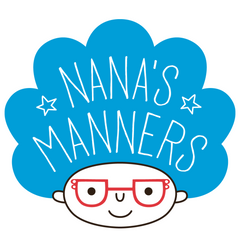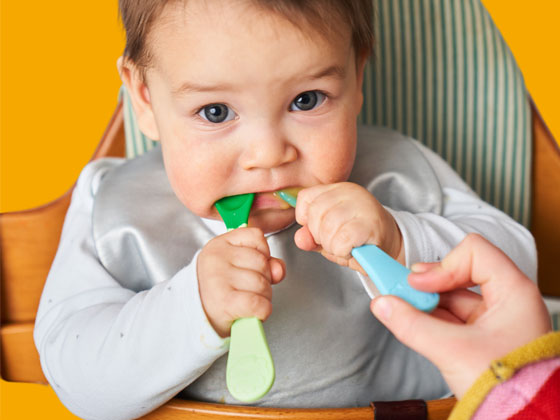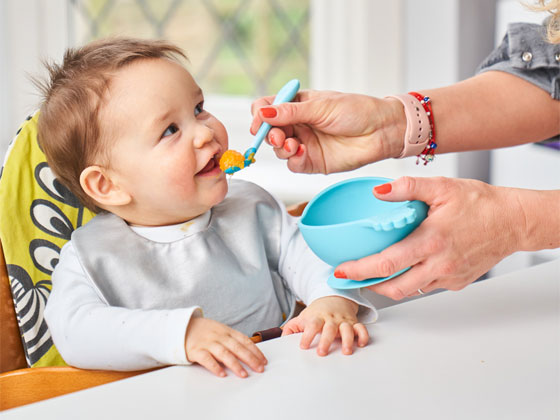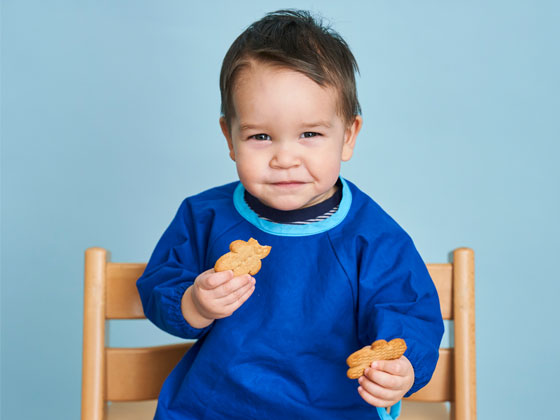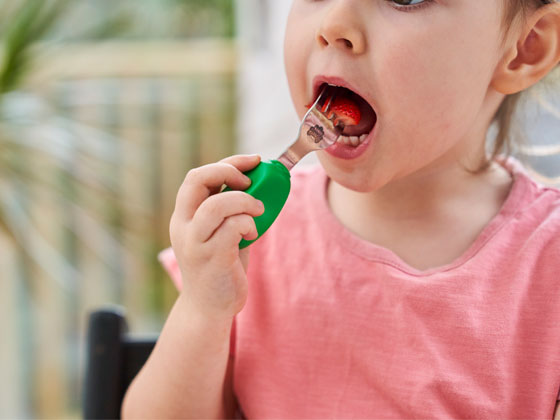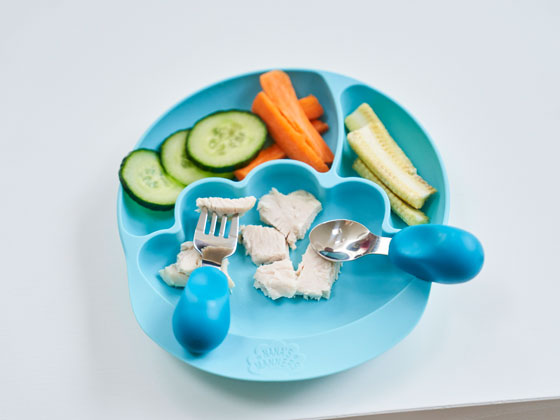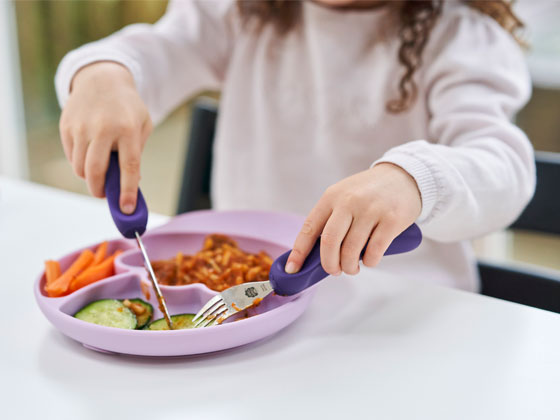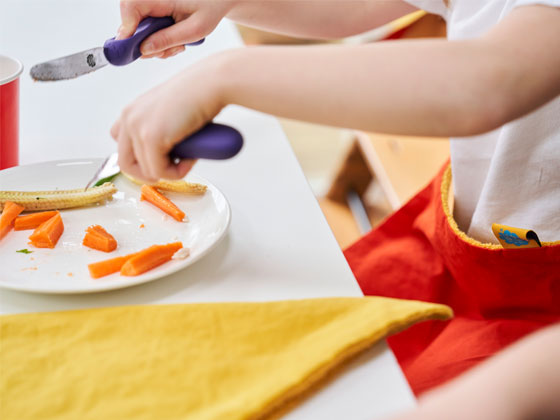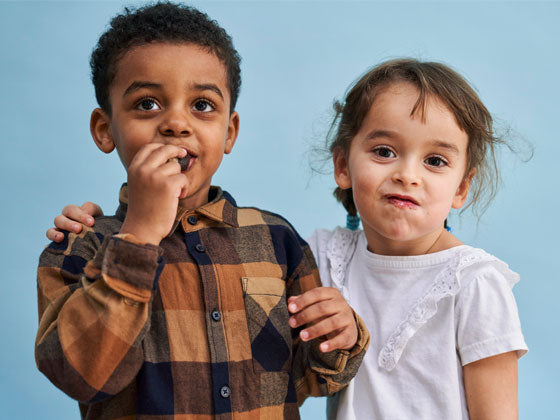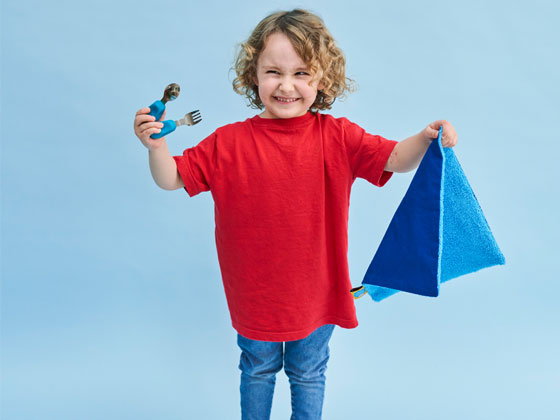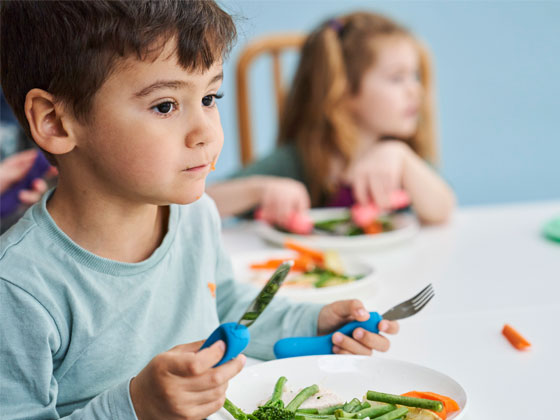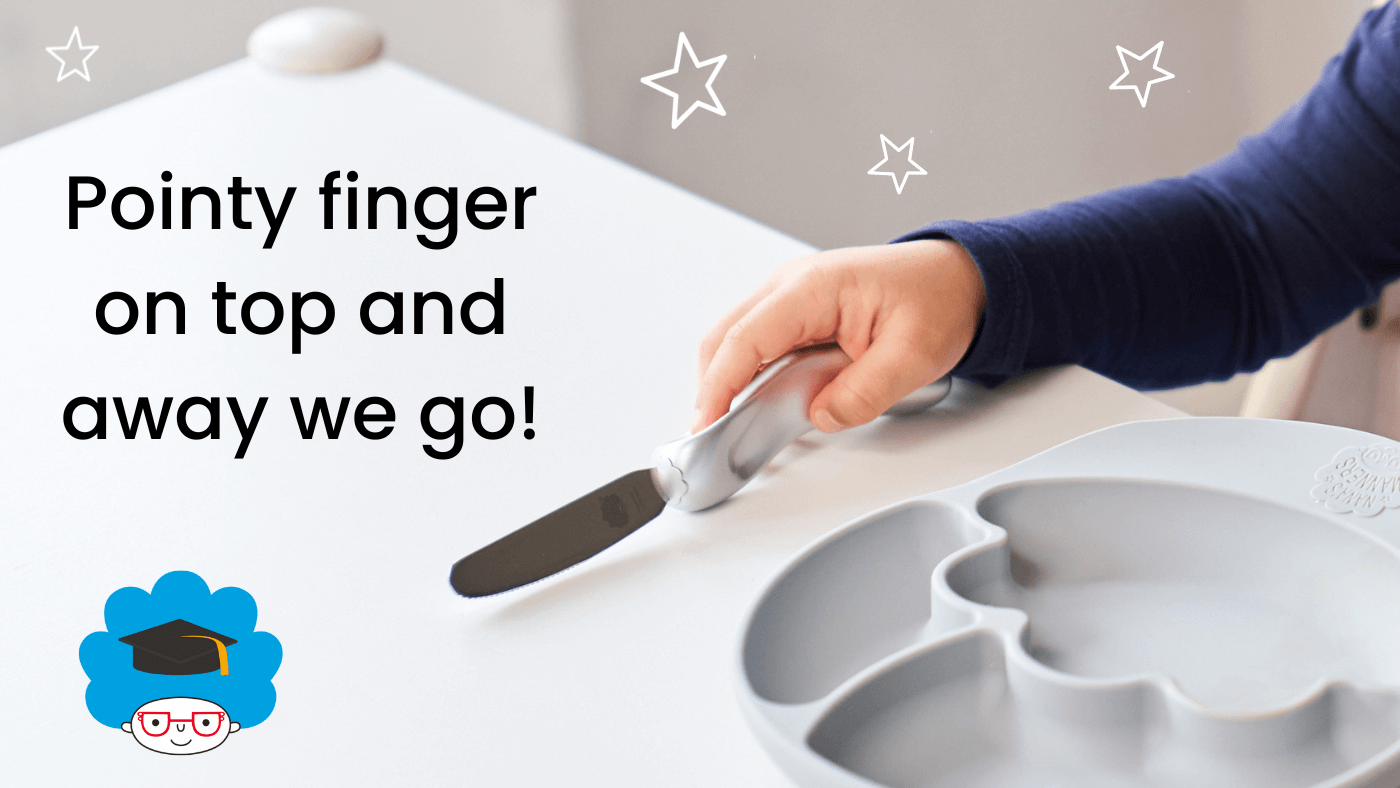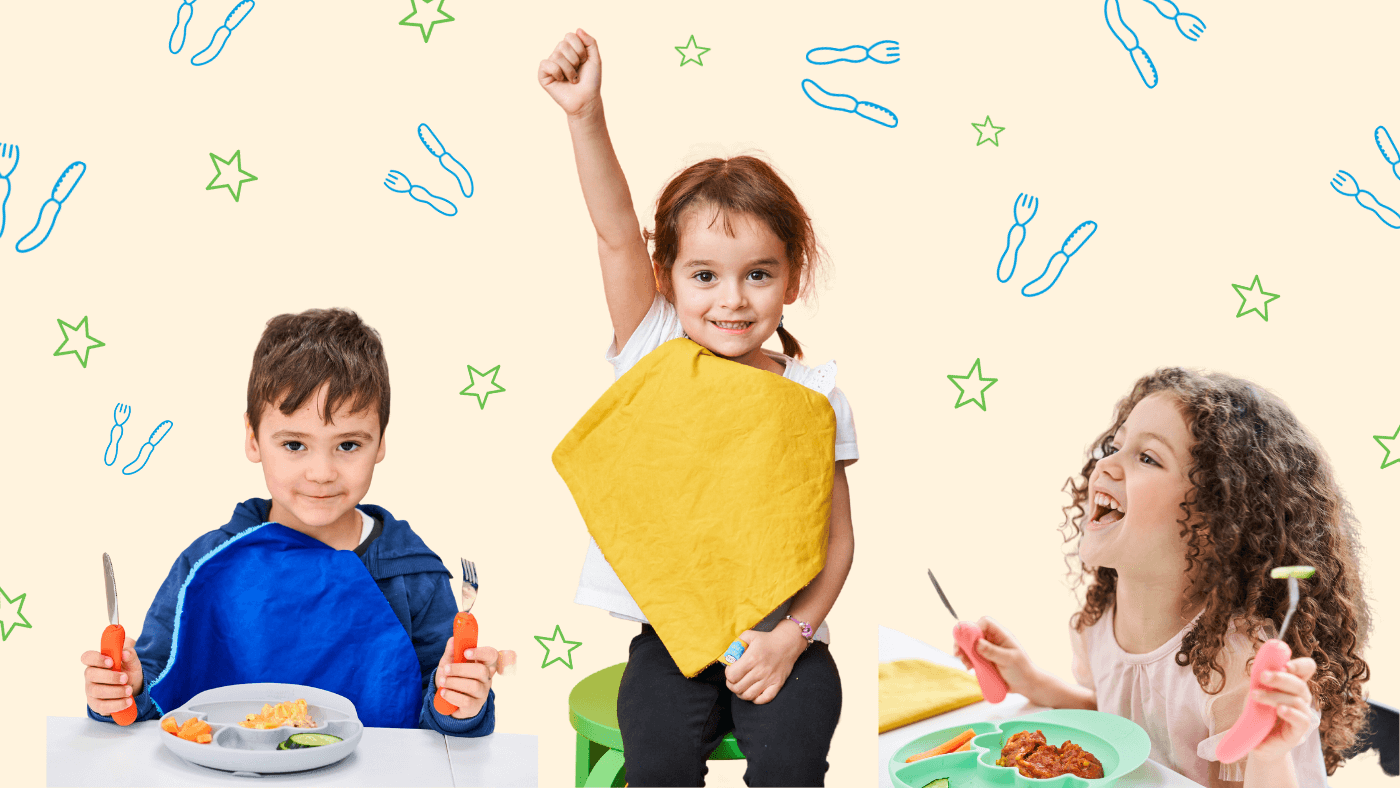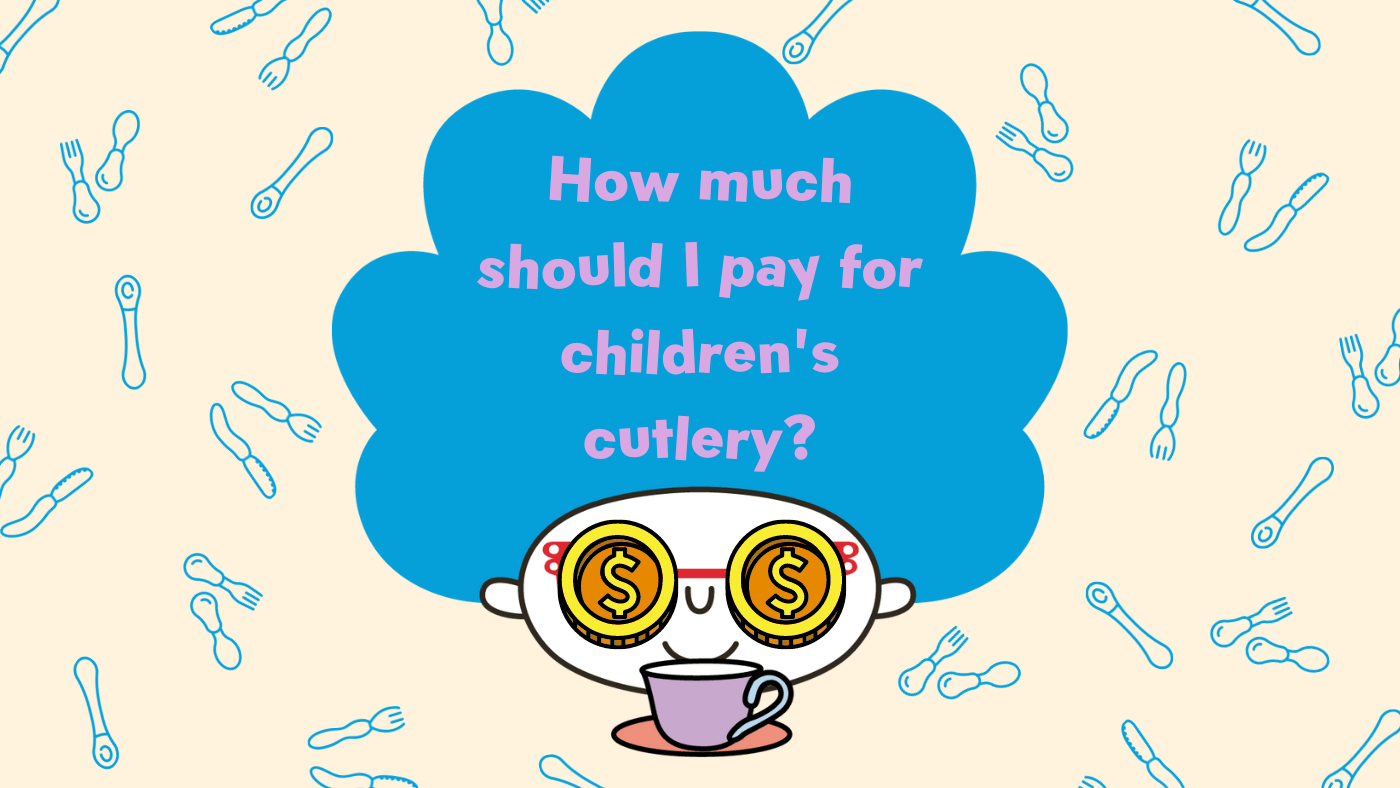Teaching children how to use a knife safely and correctly is an important life skill. Whether preparing food in the kitchen or eating at the table, good children’s cutlery will get then off to a great start here. Although they will likely be using safe, specifically designed children’s cutlery – such as our Stage 3 knives – learning the correct grip and technique with these will make their transition to regular knives later down the line much smoother (and safer). At around 3-4yrs old children will have the motor skills and co-ordination needed to begin to learn to use a knife effectively. Before this point they may be able to push down or ’chop’ things with it, but the control and co-ordination needed in their body and length of their arm to create the ‘sawing’ action will still be developing.
Here are some guidelines to help in teaching children how to use a knife correctly, so it is safe and effective:
1) Choose the right knife
Start with a child-friendly knife specifically designed for children; Nana’s Manners Stage 3 children’s cutlery sets. Our knives have a specially designed “partial serration” that will cut food (but NOT fingers) and a unique handle that provides a secure grip. As the saying goes – “a blunt knife is the most dangerous thing in the kitchen”. ‘Knives’ that don’t actually cut can lead children to pushing too hard, or pushing straight down rather than using a sawing action – both which can cause accidents. They are safer for young learners and can be used as a kitchen knife when helping to prepare food and as a table knife when eating.
2) Teaching knife safety rules
Explain that whilst their special children’s cutlery has a safe knife, designed just for them, they should NOT touch other knives in the kitchen.
3) The correct grip
Start as you mean to go on! Every box of Nana’s Manners Stage 3 children’s cutlery contains a set of finger stickers, designed to quickly and easily help with correct finger placement for the first couple of uses if needed. “Pointy finger on top” also does the job! The ergonomically designed handle does the rest! Teach them to grip the handle firmly with their dominant hand (right handers will tend to use their knife in their right hand the whole time, left handers swapping it when using a fork also). Demonstrate how to position their other hand, known as the "claw grip," to hold the food they are cutting steady.

4) Start with simple tasks
Begin by cutting soft fruits like bananas or strawberries using their knife. As they become more confident, progress to cutting vegetables or other slightly tougher foods. Play-dough is also great fun to practice with – make some dough sausages and cut away!

5) Technique
Teach your child the proper cutting technique. Encourage them to use a sawing motion, with movement at their elbow, and apply even pressure while cutting. Emphasize the importance of paying attention and taking their time to avoid rushing. They may get frustrated at first as they work out the movement but practice and patience will get them there!
6) Supervise
For a number of reasons, young children should always be supervised when eating or helping prepare food in the kitchen. This does more than just keep them safe, you’re offering them the guidance, correction, and encouragement they need and will love. Be patient and supportive throughout the learning process.
Remember, every child develops at their own pace, so be attentive to your child's readiness and abilities. Keep it fun and enjoy watching them learn a new life skill!

Nana’s Manners Stage 3 Children’s Cutlery is available here.
